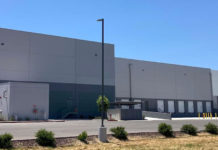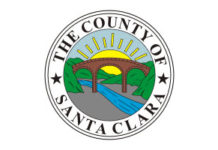GILROY
– After three hours of heated discussion and debate before a big
crowd, City Council approved a multi-million dollar financial
incentive package Monday for a major shopping center that has also
become a battleground over what could reportedly be the first Super
Wal-Mart in Northern California.
GILROY – After three hours of heated discussion and debate before a big crowd, City Council approved a multi-million dollar financial incentive package Monday for a major shopping center that has also become a battleground over what could reportedly be the first Super Wal-Mart in Northern California.
Council voted 5-2, with Councilmen Charles Morales and Peter Arellano dissenting, to approve a development agreement that could grant up to $5.4 million in sales tax rebates for the Newman Development Corp.’s Pacheco Pass Center at the junction of U.S. 101 and state Highway 152.
Supporters like Mayor Tom Springer said the overall incentives are a cost of doing business that will help bring jobs, amenities and crucial sales-tax revenues to the city. While they weren’t necessarily sold on a Super Wal-Mart, they noted the store won’t receive incentive money.
And rejecting the deal would not stop Wal-Mart but would threaten the other benefits to the city, Springer said.
“This is not about Wal-Mart, this is about city services,” he said.
But like with Regency, critics like Arellano and Morales still worried that the city is putting itself on the proverbial hook with the agreement, and questioned the necessity of doing so with large corporations that make millions of dollars.
They also said concerns about traffic and impacts to existing businesses will be too severe, or have not been addressed enough to make a decision.
“This is a sweetheart deal …” Arellano said. “(Newman) will be relieved of liability. They (can) get the money and run.”
The agreement allows Newman to use up to $5.4 million sales tax expected to originate from the new center to cover certain fees the city would charge for the project’s impacts to roads, sewers and other infrastructure. The Regency center across Highway 152 received a similar deal worth roughly $5 million last year.
The stakes are high for everyone. The city has worked for years to secure the centers and is counting on the tax revenues they generate to help cover police and paramedic services and increasing employee costs.
Both incentives are the largest in the city’s history. And both also deviate from the city’s standard incentive policy because they lack guarantees that the centers will generate enough tax to cover the “waived” impact fees.
That lack of guarantees has already drawn criticism from Arellano and Morales in the past. And news that Wal-Mart may move and expand its existing store into the new center – reportedly the first such location in Northern California – has upped the ante and drawn protests from labor unions and environmental groups who criticize that company for its labor and business practices.
Wal-Mart does not use unionized labor, a fact that company officials characterize as a choice by employees but unions say is a result of company policies and intimidation.
The high stakes were evident in the packed Council chambers Monday as both sides threw up curtains of arguments – ranging from technical points on environmental and legal issues to broader debates about large corporations and free enterprise.
Anticipating questions from the packed audience, Springer questioned city staff and developers to separate the issues and draw out information on safeguards and benefits in the agreement.
Springer said the incentives are a cost of doing business, especially since the city does not have a redevelopment agency to pay for infrastructure.
“They look around and say it’s cheaper to go to Morgan Hill or Hollister” without incentives, he said.
Meanwhile, he emphasized that Wal-Mart will not receive any incentive if it relocates to the Newman center – which could reduce the total rebate to Newman by as much as $2 million.
“This is not about Wal-Mart,” Springer told the crowd. “If they go there, they will have to pay all of the fees. They won’t get one penny of a break.”
To say the store is getting a break is dishonest, he said at one point.
“It’s the great lie to win an argument,” he said. The Germans did it before World War II.”
The city added language that allows it to commission a traffic study on any individual building in the center, officials said. The developer will also have to lure “significant” sales-tax generators and provide minimum five-year leases for each building pad in order to get rebates.
Business performance will be reviewed by the city on an annual basis, and city staff said the Sedway Group, a firm that projected the tax revenues from the center, comes highly recommended by the city’s own auditors.
“Short of having a guarantee, this is the best we could put together,” said City Administrator Jay Baksa.
But Arellano’s own line of questioning of city staff and Akel highlighted risk. The city can’t pull leases, for instance.
“What options does the city have if we don’t get that (expected tax) money?” Arellano asked at one point.
“Very little,” without a guarantee, Baksa responded.
Morales also expressed concerns about traffic, especially about emergency access. His questioning led traffic engineers to admit that congestion in the 152 corridor will be heavy – even heavier than at the Gilroy Premium Outlets.
Morales said he isn’t comfortable with environmental studies on the project.
“One of the sites hasn’t been developed, so we really don’t know (the traffic impacts),” he said.
Meanwhile, union representatives said the development agreement does affect Wal-Mart, arguing it could put additional pressure on the city to accept the Wal-Mart store – despite any adverse environmental or economic impacts – in order to cover itself on the rebated fees.
Mark Wolfe, a land-use lawyer for United Food and Commercial Workers Local 428, continued to press for a new economic and environmental analyses and said the city should wait to approve the agreement until it knows about all tenants and their impacts.
“The pressure will be to gloss over the environmental impacts,” he said.
Meanwhile, Local 428 spokesman Ron Lind accused Wal-Mart of sneaking in “under the radar” and surfacing plans for its new store after most environmental work is already done.
“This is ‘stealth zoning,’ ” he said.
But Springer said Newman tried trying to pursue another retailer besides Wal-Mart – a large electronics store – but things have not worked out. Personally, he’d like to see another business there besides Wal-Mart that would generate new tax revenue for the city, he said.
“It’s not our call,” Springer said. “We persuade, we argue, we try our best … it’s the store’s call.”
While the Council also approved an architectural and site plan Monday that allows Newman to pursue building permits for some 77,000 square feet of the center, the actual part of the development that would house the 220,000-square-foot Wal-Mart or another major tenant still has to undergo such a review in the future.














